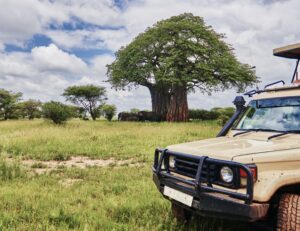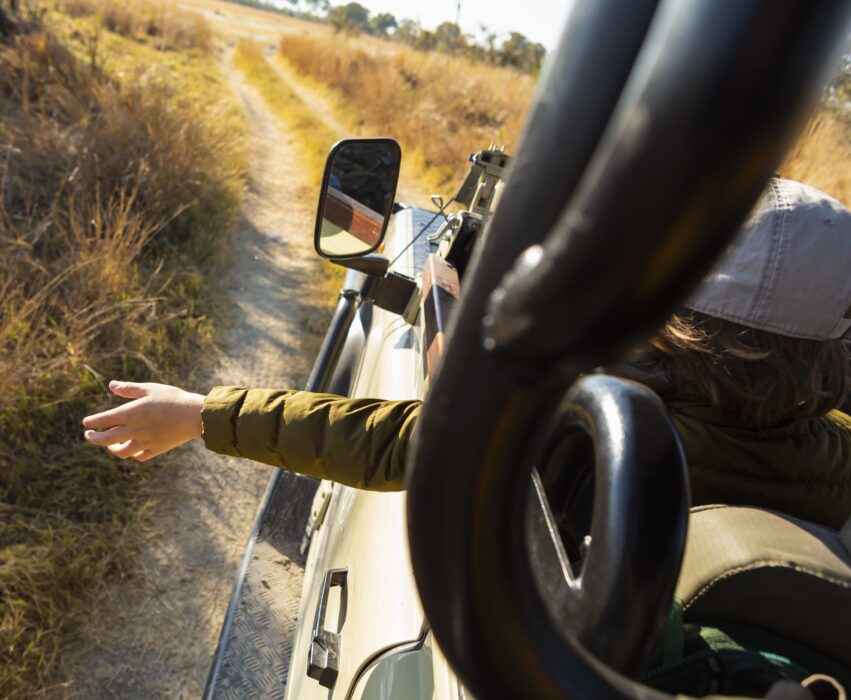Self-drive safaris in Rwanda give tourists total freedom—the kind that tour buses or guided groups cannot provide.
Instead of fixed itineraries, tourists can spontaneously stop to chat with locals at roadside markets, pause to watch wildlife cross a quiet track, or linger longer at places that captivate them the most.
Rwanda, the famed Land of a Thousand Hills, warmly invites tourists to explore its roads independently.
Easy navigation, welcoming communities, and rewarding wildlife sightings make Rwanda an ideal destination for tourists looking for an adventure on their own terms.
Forget strict schedules; Rwanda’s roads call you to discover, wander, and create a personal connection with one of Africa’s most intriguing destinations.
Why opt for Self-Drive Safaris in Rwanda
Opting for self-drive safaris in Rwanda means choosing independence, flexibility, and authentic adventure.
Unlike traditional guided safaris, self-driving lets tourists shape their experiences based entirely on personal interests and timing.
Feel like waking up early to catch the sunrise over Akagera National Park? Go right ahead. Want to spend extra hours watching primates in Nyungwe Forest? The decision is entirely yours.
Additionally, self-drive safaris in Rwanda allow tourists to connect genuinely with the country’s culture.
When tourists drive themselves, they naturally interact more with locals, whether asking directions, buying fresh fruit at roadside stands, or learning about community life firsthand.
These spontaneous interactions enrich the travel experience far beyond standard group tours.
Rwanda’s roads are among the safest and easiest to navigate in East Africa, with clear signage and generally well-maintained surfaces.
Even rural routes into national parks remain accessible year-round, making these self-drive safaris in Rwanda comfortable and stress-free.
Above all, Rwanda’s compact size means tourists can comfortably explore multiple destinations in a short amount of time, maximizing each day spent behind the wheel.
Planning Your Self-Drive Safari: Essential Tips
Careful planning is essential for the success of self-drive safaris in Rwanda. Here’s a straightforward checklist to help tourists prepare effectively:
Choose the Right Vehicle:
-
- Rent a reliable 4×4 vehicle such as a Toyota Land Cruiser or RAV4.
- Select rental companies known for good maintenance and responsive roadside support.

Secure Necessary Documents:
-
- Obtain an international driving permit (IDP) along with your home driving license.
- Book national park permits, especially gorilla trekking passes, well in advance.
- Keep vehicle registration and insurance documents handy at all times.
Navigation and Route Planning:
-
- Download offline GPS navigation apps (e.g., Maps.me) for remote areas without mobile coverage.
- Purchase or print physical maps in Kigali as reliable backups.
- Plan daily driving distances carefully to avoid fatigue and nighttime driving.
Understand Local Conditions:
-
- Research park regulations, opening hours, and specific vehicle restrictions in national parks.
- Confirm locations of fuel stations and plan refuelling points along your route.
- Stay updated about current road conditions, especially during Rwanda’s rainy seasons.
Guide on navigating Rwanda’s Roads.
Driving in Rwanda offers tourists a comfortable, safe, and enjoyable experience, especially when aware of a few essential details.
Rwanda maintains a well-developed road network, with smooth asphalt highways connecting major cities and towns.
However, as tourists venture into national parks or rural villages, dirt roads become more common.
These tracks are usually easy to navigate but can become challenging during heavy rains. Therefore, tourists should always check seasonal conditions before setting out.
Traffic in Rwanda moves on the right-hand side of the road, and speed limits are strictly enforced, typically set at 40 km/h in towns and villages, and 60–80 km/h on open highways.
Police checkpoints frequently appear along major routes, particularly near park entrances.
Tourists should always carry identification, driving permits, and vehicle documents for smooth interactions.
Fuel stations remain widely available throughout urban centres and along major roads, though fuel becomes scarcer deeper into rural areas.
Tourists should always fill up before long drives into remote regions, such as when heading toward Nyungwe or Akagera National Parks.
Additionally, patience and courtesy significantly enhance the driving experience in Rwanda.
Local drivers generally maintain moderate speeds but may occasionally pass slower vehicles unexpectedly.
Staying alert and respectful of driving customs makes travel safer and more pleasant.
Must-Visit Destinations on Your Self-Drive Safari
Tourists can access many destinations perfect for self-drive safaris in Rwanda.
Each destination provides distinct experiences that highlight Rwanda’s wildlife, culture, and natural beauty.
Volcanoes National Park
Home to Rwanda’s famous mountain gorillas, Volcanoes National Park ranks among the top destinations in East Africa.
Tourists driving here typically stay in Musanze, a welcoming gateway town with easy access to the park’s headquarters.
Besides gorilla trekking, tourists often participate in golden monkey tracking or guided hikes around the park’s volcanic peaks.
Akagera National Park
Akagera National Park remains Rwanda’s premier wildlife reserve, known for its lions, elephants, giraffes, buffaloes, and even rhinos.
Self-driving tourists appreciate the marked trails ideal for game viewing.
Lake Ihema provides a scenic spot to take boat safaris and witness hippos, crocodiles, and abundant birdlife up close.
Nyungwe Forest National Park
Nyungwe Forest attracts tourists with its chimpanzees, primates, and extensive bird species.
Self-drive tourists can explore the park’s main entrance via the scenic Huye-Rusizi route.
Popular activities include guided chimpanzee treks, forest walks, and an impressive canopy walkway providing views across the forest treetops.
Lake Kivu
This infamous Lake Kivu is popular for offering relaxation after more tedious wildlife adventures like safaris and trekking.

Driving along its peaceful shoreline, tourists stop in lakeside towns like Gisenyi and Kibuye, known for their friendly locals, fresh fish dishes, and beautiful lakefront views.
Boat trips, swimming, or simply relaxing on sandy beaches perfectly complement the safari experience.
Safety and Practical Advice
While self-driving in Rwanda is generally safe, tourists must remain attentive and prepared.
Before setting out each day, perform a quick but thorough vehicle check.
Inspect tyres, brakes, oil levels, and lights, and ensure spare tyres and emergency tools stay easily accessible. This routine prevents unnecessary roadside issues.
Encountering wildlife along rural roads is common, especially near national parks.
Tourists should always drive slowly, giving animals space to cross without disturbance.
Never exit vehicles near wild animals, even if they appear calm. Keeping windows up and remaining patient typically ensures these encounters stay safe.
Emergency preparation is equally essential.
Carrying a basic first-aid kit, sufficient drinking water, snacks, and a fully charged mobile phone greatly reduces potential risks.
Additionally, tourists should keep important numbers handy—such as rental company contacts, local police, and emergency medical services—to swiftly handle unexpected situations.
Finally, driving after dark is not recommended. Rural roads often lack street lighting, and wildlife movements increase at night, making daytime travel significantly safer and more comfortable.
Final Thoughts on Your Self-Drive Safari in Rwanda
Choosing a self-drive safari in Rwanda creates a unique opportunity to genuinely experience this welcoming country on your terms.
With careful planning, awareness of local driving conditions, and sensible safety measures, tourists can independently explore Rwanda’s beauty, wildlife, and culture, creating memories far richer and more personal than any guided tour could provide.
Rwanda warmly awaits tourists willing to venture beyond traditional travel boundaries, encouraging exploration, curiosity, and connection every step of the way.

